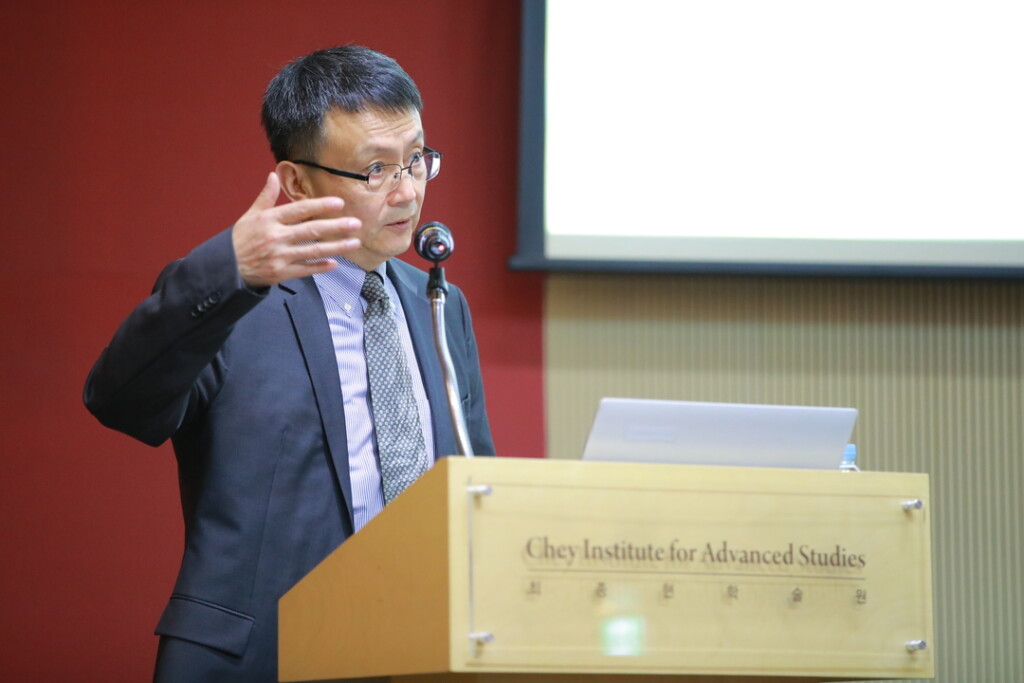Critical Issues Confronting China: Jia Qingguo
China has faced intensified scrutiny amidst the U.S-China trade war and is often portrayed as a threat to the existing “rules-based order” and liberal democracy. This has led to a tighter coalition between the United States and its allies. However, according to leading Chinese foreign policy thinker Jia Qingguo, the strife between the United States and China may not serve the interest of either country.
During a talk in the Critical Issues Confronting China series at the Fairbank Center for Chinese Studies, Jia Qingguo, a professor at the School of International Studies at Peking University, discussed how it is “forced and harmful” to frame U.S.-China relations in ideological terms. He contended that the Biden administration, has used China as “a tool and a target,” and that the rhetoric has stymied any constructive negotiations.
Three Takeaways
The “Winner Take All” paradigm no longer applies to the global superpower rivalry
How did China become the enemy of the U.S.-centered world order? Jia pointed to a merger of two historical developments that foreshadowed an inevitable rivalry between the U.S. and China. The first originated from the imperialist race for dominance where nations fought over the ownership of colonies. To increase one’s power meant to reduce others, often through collisions and resulting destruction. The second development pertained to the Cold War rivalry between the U.S. and the Soviet Union, which created a sense of existential incompatibility between superpowers.
As China replaced the figurative position of the Soviet Union, Jia argued, Western political pundits assumed that it would challenge American prerogatives. Through this assumption, any Chinese action that did not align with U.S. interests appeared as a sign of an impending clash.
“To China, the renewal of the so-called liberal alliances has much to do with competing, confronting and containing China, and China has no alternative but to fight back.”
Jia Qingguo
China as a “threat” has united post-Trump America and its overseas allies.
The U.S. has renewed and strengthened its relationship with allies over the past few months. Following the bloodshed in Ukraine, Jia noted, the Biden Administration has expanded American political and military presence overseas. Washington has forged better coordination with NATO, stronger pro-U.S. alliances in the Pacific (especially with South Korea and Australia), and the solidification of the Quadrilateral Security Dialogue between the U.S., Japan, Australia, and India.

Amidst these developments, China has emerged in the American view as an ever-so-prominent threat. Media reports on the Chinese police response to the 2019-2020 Hong Kong protests pictured it as authoritarian and a danger to liberal democracy. The image cemented as China expressed its antagonism toward any discussion of Taiwan’s de jure independence and foreign interference with Chinese policies in Xinjiang. Alleged Chinese intervention in U.S. domestic politics further characterized China as “a threat to the American way of life.”
American policymakers have “increasingly worried that an economically, politically, and ideologically different China poses a threat to the American way of life. So this is an added reason to confront and contain China,” Jia said. “Therefore, to China, the renewal of the so-called liberal alliances has much to do with competing, confronting and containing China, and China has no alternative but to fight back.”
Jia argued that such a portrayal of the alleged China threat expedited the Biden administration’s international and domestic strategies. On the one hand, U.S. criticisms of China, along with active outreach, helped unite its allies and bolstered their faith in American presence abroad. On the other, these effects buttressed the U.S.-centered alliance and the Democratic Party platform, both of which were purportedly damaged during the Trump administration.
While the U.S. and China differ in their implementations, they share core values.
Jia conceded that China is not without fault, arguing that it should have made more efforts to communicate effectively. But once the antagonistic rhetoric subsides, Jia predicted, it will be evident that the United States and China share core values, such as democracy, freedom, the rule of law, and justice. Only their implementations may look different. Giving an example of Xi Jinping’s avowal, Jia added that “China has argued that its political system is fundamentally a democratic one,” and it captures what Xi called “a whole-process democracy” beyond the institution of elections. Regarding the Taiwan issue, Jia adumbrated that China will maintain the stance made by former President Yang Shangkun and expect the same degree of respect as it would give to American foreign affairs.
At this tense moment, Jia argued that the United States and China need exchange and dialogue more than ever. However, he said, framing the U.S.-China relationship solely in ideological terms precludes pragmatic negotiations and a new vision of sustainable coexistence. Cooperation on matters of mutual concern should be prioritized, and competition should be aimed at driving both countries to improve in their own right, rather than pushing to undermine one another.


